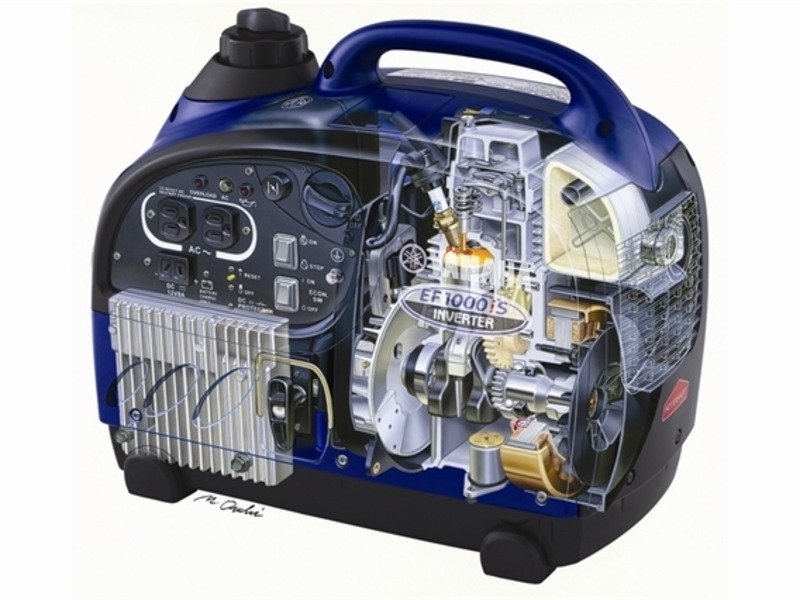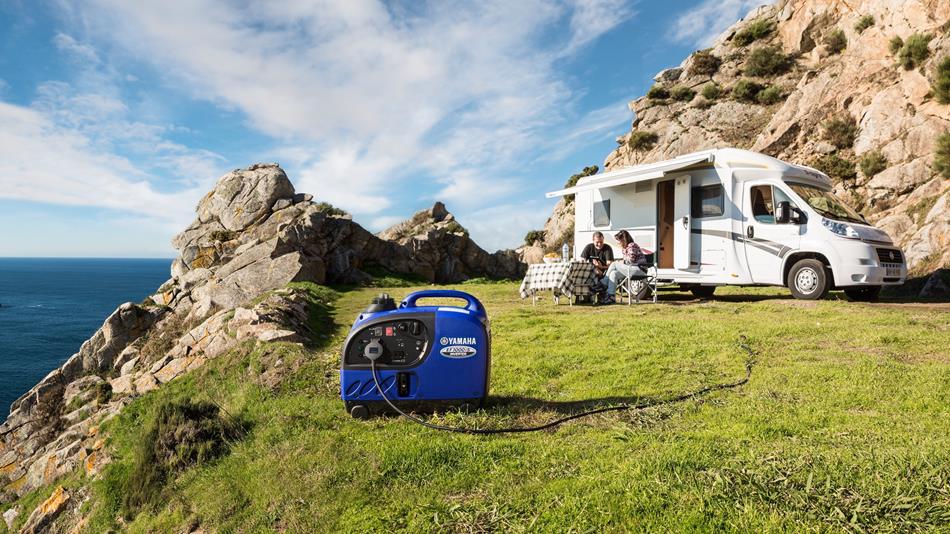YAMAHA vs. HONDA 1000 watt Generator
Yamaha and Honda: these big boys lead the way in inverter generators. But despite appearances, Yamaha and Honda generators are not made exactly equal. The challenge for buyers is delving deep into the features to work out which provides the best value for your needs.
The good news is we've done the hard work for you. Starting with the smallest of their inverter ranges - Yamaha EF1000iS and Honda EU10i - we've drilled down into the details to give you the ultimate comparison in one place.
On the surface, it's easy to pass off these two inverter generators as the same. Both the Yamaha and Honda 1000W generators comprise inverter technology making them ideal for use with sensitive electrical equipment, such as computers and mobile phones. They're both lightweight and compact - in fact their dimensions are exactly the same. They are both quiet and have a recoil start. And because of all this, they are extremely popular generators for the camping and recreational market. But their similarities end there.
Let's look at the details:
Light Weight: In the battle of weight, the Yamaha EF1000iS wins hands down. Weighing a feathery 12.7 kilograms, it is the lightest 1000W portable inverter generator you can buy. The Honda EU10i weighs in at 13.2 kilograms. While half a kilo might not sound like much, but when you're moving a generator back and forth on the campsite, you'll want the lighter option!
Silent Operation: Let's be honest, you can choose either of these models, switch them on and pretty much forget they're even running. But thanks to the patented Yamaha Noise Block Sound Reduction System the Yamaha EF1000iS boasts super silent operation with only 47 decibels of noise at a quarter load, as measured at seven metres. That's quieter than a normal conversation! The Honda is slightly louder at 52 decibels.
Fuel Efficiency: Don't be fooled by the compact size of these 1000W models, the Yamaha EF1000iS can run for up to 11.9 hours at a quarter load before needing a fuel top-up. By comparison, the Honda EU10i lasts for 8.7 hours - three hours less than its Yamaha counterpart. The Yamaha 1000W generator features a smart throttle, which automatically adjusts the engine speed to match the required output. This maximises fuel efficiency so you get more power when you need it. Similarly, the EU10i has an Eco-throttle. The Yamaha 1000W generator also has a larger fuel capacity with a 2.5-litre fuel tank over the Honda's 2.3-litre fuel tank.
Top Features: The Yamaha 1000 watt unit comes with features you would usually only see on larger generators, such as a low oil alert, an AC plug and DC charging cord, and a spark arrestor. The Honda 1000 watt model does have something the Yamaha doesn't - a Parallel Connection feature. This means that if you have two Honda EU10i generators, you can link them with a cable and double your output to 2000W.
Warranty: With either of these inverter generators, you're getting the peace of mind that comes with the strong Yamaha and Honda brands. Both manufacturers are famous for engineering the best power equipment in the world. That said, it's still wise to choose a generator with a good warranty period in case the worse happens. Luckily, both the Yamaha EF1000iS and Honda EU10i come with a four-year domestic warranty, backed by a national service network.
The Winner
Looking at the comparison, Yamaha EF1000iS . It is lighter, quieter and more fuel-efficient that the Honda 1000W model. The only added advantage the Honda has is the Parallel Connection, but that's a feature you can only enjoy if you have two of the same generators.
Yamaha EF1000iS vs. Honda EU10i Comparison Table:
| Yamaha EF1000iS | Honda EU10i | |
| Maximum Output: | 1000 Watts | 1000 Watts |
| Rated (Continuous) Output: | 900 Watts | 900 Watts |
| Operating Hours (1/4 Load): | 11.9 hrs | 8.7 hrs |
| Fuel Tank Capacity: | 2.5 L | 2.3 L |
| Size (LxWxH): | 450x240x380 mm | 450x240x380 mm |
| Dry Weight: | 12.7kg | 13.2kg |
| Noise Level (1/4 Load / 7m): | 47 dBA | 52 dBA |
| Starting System: | Recoil | Recoil |
DISCLAIMER* Please note, this advice is general in nature and we strongly recommend consulting the product manual and where relevant, a professional installer.











